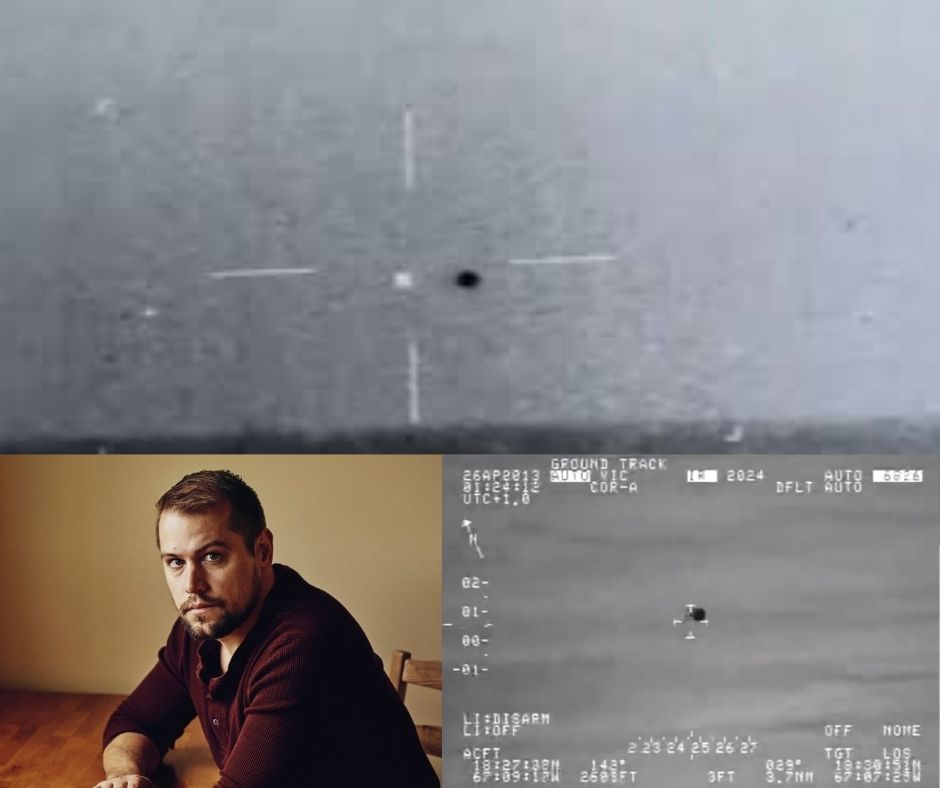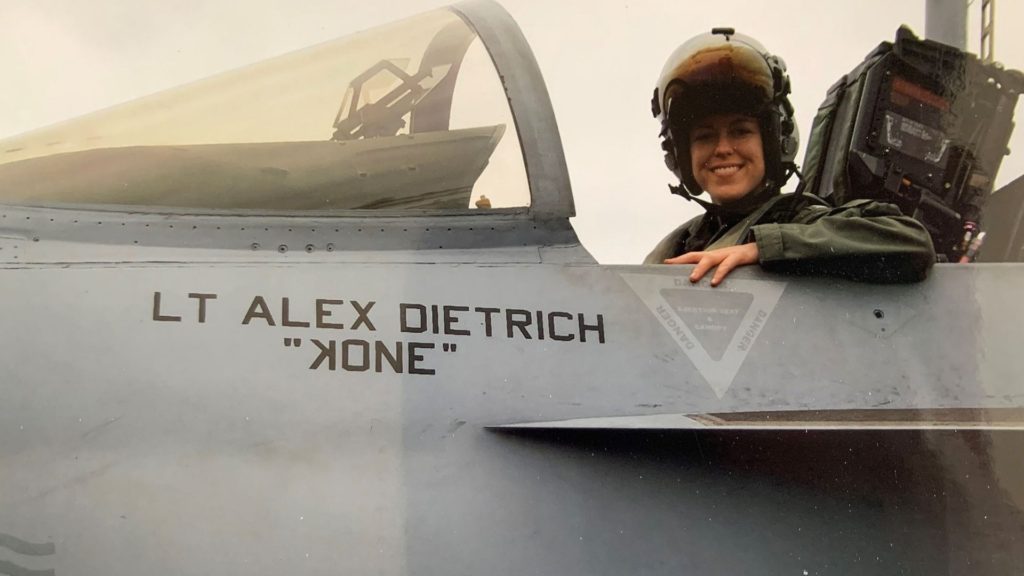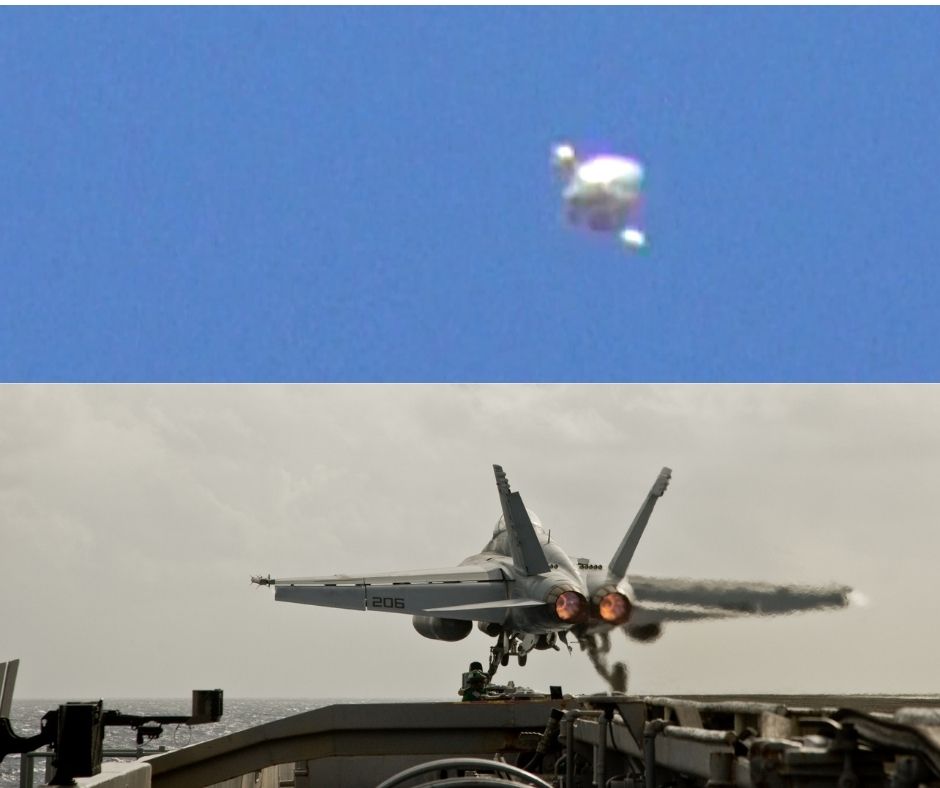According to U.S. Navy F/A-18 pilot Ryan Graves, he and his fellow military pilots encountered UAPs almost every day.
“There were those everyday occurrences off of the East Coast, where we’d go up, and we’d see these UAPs on our radar.
We’d see those UAPs on our FLIR and very rarely with our eyeballs. And these encounters were a daily issue.” And they’re still out there.
F/A-18’s upgrade to the AN/APG-79, AESA
Ryan says the appearance of these odd intruders coincided with the F/A-18’s upgrade to the AN/APG-79, AESA (active electronically scanned array radars).
The upgrade represents a massive boost in combat capability for the Hornets. This signifies the most substantial capability upgrade in the legacy Hornet’s entire history.
These upgrades give the fighter pilot a slew of enhanced abilities. It includes enhanced detection and tracking ranges, target discrimination, and identification.
It also provides the ability to spot low-flying reduced radar cross-section targets like cruise missiles and the capability to rapidly scan vast volumes of airspace as AESA radars do not rely on a mechanically steered radar dish to do so.

“Sometimes you get reflections off clouds with those older radars, so we were somewhat accustomed to seeing things on the radar that didn’t necessarily mean an object was actually there.
But the APG-79 wasn’t supposed to have this problem, but it was quite new, so we just thought at first this was a bug in the software,” said Ryan.
Rather quickly, pilots began to realize whatever those radar returns were; they weren’t bugs in the system. “
We started locking those UAPs up as solid returns and then slaving the FLIR to it, meaning you see an infrared (IR) source.
That’s when we realized this wasn’t some type of radar malfunction. There were real physical objects out there.”
The AN/ASQ-228 ATFLIR targeting pod capturing these UAPs is a multi-sensor, electro-optical system that incorporates a low-light television camera, laser spot tracker, target laser rangefinder/designator, and thermographic camera.
The higher a UAP’s temperature, the more infrared black-body radiation is emitted.

The modern thermographic component of the ATFLIR converts those infrared emissions into an image the same way a standard camera forms an image using visible light.
The systems are integrated with different sophisticated avionics, including radar, all to provide the modern warfighter with a superior degree of situational awareness.
“There were some distinct things we’d notice. The UAPs had a distinctive radar signature, which would allow the fighter pilots to recognize those things whenever they’d pop up on their integrated situational awareness page.
Typically the UAPs were stationary, but sometimes they were moving, but rarely at supersonic speeds. But most of the time, the UFOs weren’t going incredibly fast.”
According to Graves, the pilots have what’s called a target aspect indicator. It is a line that comes off the radar track that represents the vector of the target or what direction the UAP is moving.
When these UAPs were stationary, the aspect indicator jumped around.

“darting around like a housefly”
For example, the UAP would be going to the 12 o’clock position on one pass. Then abruptly at six o’clock, and then three o’clock, etc.
This would maybe make sense for a stationary target. But the pilots saw this same type of jitteriness when they were moving targets as well. The target aspect wasn’t smooth like an aircraft.”
In the last years, when more enduring data is obtained, more often than not, and thanks to increasingly sophisticated air defense systems, this same “jitteriness” Ryan Graves described often comes up.
Other pilots say; described sightings they had of a UAP that was “violently and erratically maneuvering” as it traveled through the air.
“It was darting around like a housefly.” The analogy of a housefly did resonate with what some of Graves’ fellow pilots said they had experienced.

“they’re still out here.”
Many pilots would see these UAPs on the radar and go try to check them out. But very rarely, though, would they physically see anything because it was like with a housefly.
When they’d get close, the UAPs would move a little bit up or down. Just enough so you’d miss them.
But on the few rare occasions, pilots did catch a glimpse; the UAPs were oddly described as looking like a cube in a sphere.
The UFOs would engage in evasive maneuvers, occasionally be seen flying in formation, and sometimes traveling at close to supersonic speeds.
Graves says: that pilots almost exclusively encountered the mysterious UAPs over the ocean, between about 10 to 300 miles off the coast.
“I don’t think we ever saw them over land, but to be fair, we rarely flew over land,” specified Ryan.
According to Graves, a former flight student of his who graduated and made it to the fleet told him, “they’re still out there.”

Pingback: Are we witnessing the last stage of disclosure? – AI Driven UFO / UAP Reporting Tool